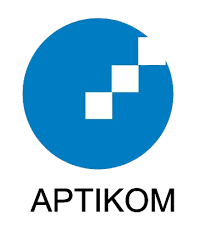Measurement of AI3, AI4, and DS4 IT Process Maturity Using the Cobit 4.1 Framework at KOMINFO Bantul
DOI:
https://doi.org/10.18196/eist.129Keywords:
Information Technology Governance, COBIT 4.1, DISKOMINFO Bantul.Abstract
This research discusses the condition of information technology at KOMINFO (DISKOMINFO) Bantul governance. This study aims to discover where has KOMINFO applied information technology governance properly. This research focuses only on IT processes. Only the AI3 IT process discussed how to generate and maintain the IT infrastructure. AI4 IT process discussed how to enable and use the IT infrastructure, and the last is the DS4 IT process that discussed how to ensure sustainable services. A questionnaire, an interview with employees of KOMINFO Bantul, and documentation were utilized to collect data. Data processing results were used to determine the maturity level of information technology governance at KOMINFO Bantul. After knowing the maturity level of the IT processes, then it was analyzed to measure the alignment between the TKTI current condition with the TKTI condition equipped with the COBIT framework.
References
M. Eremia, L. Toma, and M. Sanduleac, “The Smart City Concept in the 21st Century,” Procedia Engineering, vol. 181, pp. 12–19, 2017, doi: 10.1016/j.proeng.2017.02.357.
M. T. R. Farikhah, “Implementation of Smart Governance Concept Policy in Bantul Regency,” JIPN, vol. 18, no. 2, p. 129, Apr. 2020, doi: 10.35967/jipn.v18i2.7809.
H. Nugroho and S. F. S. Gumilang, “Recommendations for Improving Data Management Process in Government of Bandung Regency using COBIT 4.1 Framework,” in Proceedings of the 2020 9th International Conference on Software and Computer Applications, New York, NY, USA, Feb. 2020, pp. 57–61, doi: 10.1145/3384544.3384588.
M. Yasin, A. A. Arman, I. J. M. Edward, and W. Shalannanda, “Designing Information Security Governance Recommendations and Roadmap Using COBIT 2019 Framework and ISO 27001:2013 (Case Study Ditreskrimsus Polda XYZ),” in 2020 14th International Conference on Telecommunication Systems, Services, and Applications (TSSA, Nov. 2020, pp. 1–5, doi: 10.1109/TSSA51342.2020.9310875.
B. Shojaie, H. Federrath, and I. Saberi, “Evaluating the Effectiveness of ISO 27001: 2013 Based on Annex A,” in 2014 Ninth International Conference on Availability, Reliability and Security, Sep. 2014, pp. 259–264, doi: 10.1109/ARES.2014.41.
R. Y. Susanti and Y. G. Sucahyo, “Information technology governance evaluation and processes improvement prioritization based on COBIT 5 framework at secretariat general of the Indonesian house of representatives,” in 2016 4th International Conference on Information and Communication Technology (ICoICT), May 2016, pp. 1–6, doi: 10.1109/ICoICT.2016.7571906.
IT Governance Institute, Ed., COBIT 4.1: framework, control objectives, management guidelines, maturity models. Rolling Meadows, IL: IT Governance Institute, 2007.
A. Pederiva, “The COBIT Maturity Model in a Vendor Evaluation Case,” vol. 3, p. 4, 2003.
Asroni, L. F. Hamdi, S. Wardaningsih, and W. A. Puspitosari, “E-emsy Development in the Implementation of Psychiatric Emergency Training for Nurses and Doctors,” Jan. 2021, pp. 590–603, doi: 10.2991/ahsr.k.210115.113.
H. W. Utomo, “Evaluasi Sistem Informasi Kesehatan Terpadu e-Health Dengan Hot Fit Model Di Puskesmas Wilayah Kerja Dinas Kesehatan Kabupaten Bantul [Evaluation of the e-Health Integrated Health Information System with Hot Fit Models in the Community Health Center in the Bantul District Health Office],” other, Faculty of Public Health, 2011.



